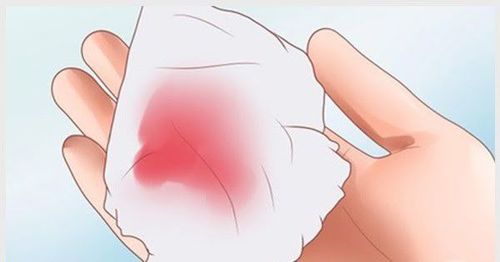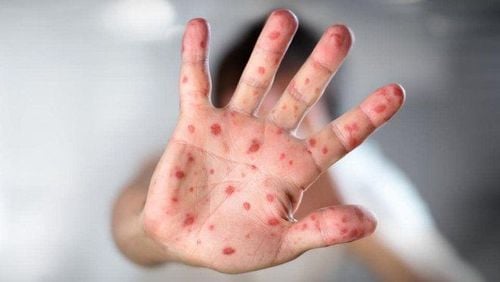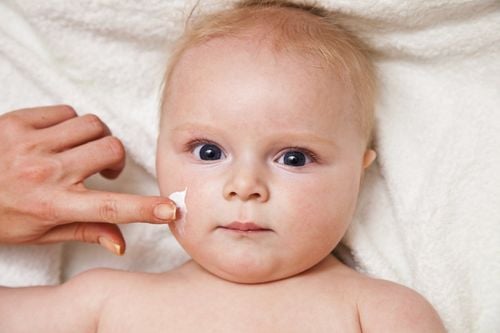This is an automatically translated article.
From birth to adulthood, most children have had some medical condition. This makes the mother worried, but according to science, it has been proven that sick children are not all bad, but it is an opportunity to activate the child's immune system to help prevent future illnesses. Common diseases in children under 3 years old such as ear infections, respiratory diseases, hand-foot-and-mouth disease,...
1. Respiratory syncytial virus disease
The syncytial virus is one of the most common respiratory pathogens in infants and young children. This is the cause of diseases such as pneumonia, bronchiolitis in children,... Symptoms of these diseases are often similar to those of the flu, including: runny nose, cough, fever, etc. .. There are 40% of cases of respiratory syncytial virus infection with symptoms progressing to wheezing leading to bronchiolitis or very dangerous pneumonia.2. Ear infections
Children under 3 years old are often susceptible to ear infections because the children's auditory tube is very small, the eustachian tube is short, making it easy for bacteria and viruses to enter. There are many types of ear infections such as otitis externa, otitis media, or otitis externa. Children's symptoms include fussiness, fever, nausea, pain in the ear or when pulling the ear,... In fact, there are many ear infections caused by viruses but fortunately there are now several vaccines available. Helps children prevent ear infections caused by bacteria.
Watch now: 5 common diseases in children at the change of season from spring to summer
3. Tracheobronchitis in children
laryngotracheobronchitis is a common childhood disease, causing swelling of the larynx and trachea, obstructing the airways, making it difficult to breathe. laryngotracheobronchitis occurs mainly in children under 5 years of age. Symptoms of the disease are usually fever, cough, wheezing and even difficulty breathing. Tracheobronchitis worries many parents, but it can be treated in about a week.4. Hand, foot and mouth disease
Hand, foot and mouth disease occurs mainly from summer to early autumn, usually caused by coxsackie virus A16 and is very contagious. Symptoms include fever and blisters on the inside of the mouth, buttocks, palms, and soles of the feet. Hand, foot and mouth disease can be prevented by good hygiene, regularly washing children's hands, feet and toys. Most non-serious cases go away in 7 to 10 days.
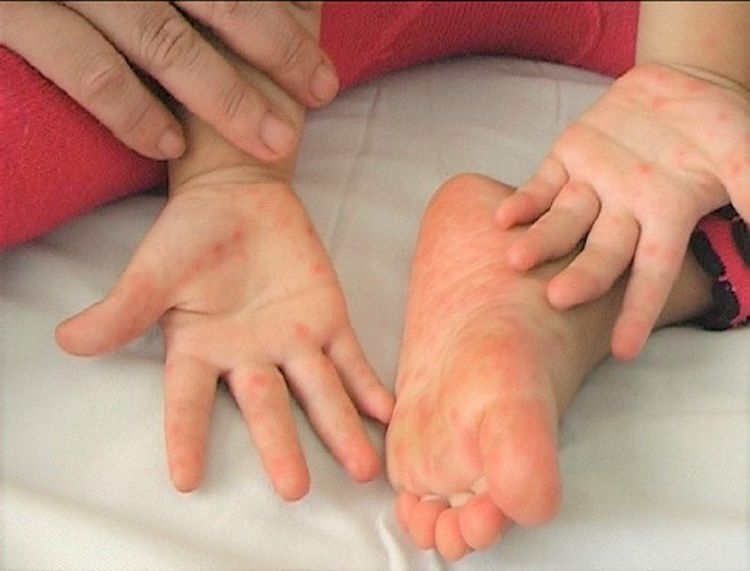
Bệnh chân tay miệng là bệnh ở trẻ sơ sinh thường gặp
5. Red eye
Pink eye is a common disease that many children under 3 years old have, especially the disease is very contagious during the epidemic season. Pink eye is usually caused by a virus. Most cases of pink eye will go away after 4-7 days, if eye pain persists, consult your pediatrician about treating eye pain for children.
6. Acute infectious erythema
Acute infectious erythema is characterized by a red rash on the face, which may appear on the arms, legs, and trunk. The causative agent is usually parvovirus, which is a virus that can cause cold-like symptoms before a rash appears. Scarlet fever is also contagious, but once the rash appears the child will no longer be contagious. The rash should go away within a week to 10 days.
Watch now: Common diseases in children in the hot season - Instructions for prevention and treatment
7. Rotavirus
Rotavirus is the leading cause of death in young children without a vaccine. The disease presents with symptoms such as diarrhea and vomiting. Most of the deaths from rotavirus infection are caused by dehydration in children. Therefore, when suspecting that a child has rotavirus infection, it is necessary to take the child to the hospital for examination. In addition, to prevent rotavirus disease, parents can give their children the rotavirus vaccine for babies.
8. Chickenpox
Chickenpox is a viral disease with characteristic clinical manifestations that are itchy blisters. Chickenpox can cause serious complications in babies, pregnant women, and adults. The chickenpox vaccine is the best way to prevent chickenpox.
9. Measles
In recent years there has been an outbreak of measles because children were not vaccinated. The initial symptoms of measles are usually fever, cough, and runny nose followed by a generalized rash. Most children usually recover after 2 weeks, but some have complications in the lungs and some other organs.
10. Whooping cough
Whooping cough is a common childhood disease causing acute infection in the respiratory tract. Children with pertussis will show symptoms including vomiting, cough, sputum, stridor and possibly bleeding,... Even children with pneumonia or neurological complications. If a child has whooping cough, they need to be isolated, for severe cases, they must be treated in a hospital. Fortunately, there is now a vaccine to prevent whooping cough.
11. Meningitis
Meningitis is an infection or inflammation of the surrounding tissues in the brain and spinal cord. In adolescents or adults, meningitis may present with symptoms such as headache, fever, and stiff neck. Young children may experience flu-like symptoms such as fussiness or flu. Currently, vaccines can prevent some common strains of meningitis in children. Meningitis leaves extremely dangerous complications and often affects a child's life long-term.
12. Sore throat
Pharyngitis is a disease that most children around the world have had, usually caused by bacteria or viruses. The disease has symptoms of painful swallowing, sore throat, sore throat or fever,... However, sore throat is a common symptom appearing in many different diseases, so it's easy to confuse. Although there is a cure for sore throat, parents still need to take their child to a doctor to find the cause of the disease for effective treatment.
13. Fungal diseases
Yeast is a skin infection that is often scaly, usually on the skin or on the head. The fungus is very contagious from one child to another, so parents need to pay attention to isolating sick children, using separate brushes, towels, and clothes. Fungal infections can be treated with antifungal medications.
14. Influenza
Colds and flu often share the same symptoms. Influenza usually causes high fever, chills, fatigue, body aches, nausea or vomiting. The flu is very dangerous for children because it can lead to serious complications such as pneumonia. According to the health organization, everyone should get a flu vaccine every year for children 6 months and older.
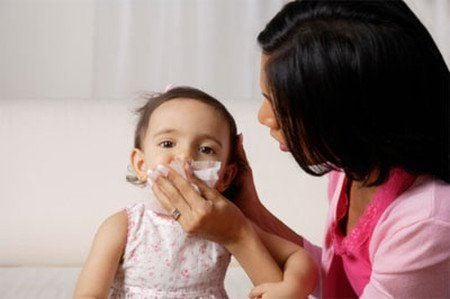
Bệnh cúm là bệnh ở trẻ sơ sinh thường gặp
15. Seasonal allergies
Seasonal allergy is not an infection, people often react to microscopic particles like pollen, dust,... especially when it starts in spring or autumn. Symptoms include sneezing, runny nose, watery eyes, stuffy nose, etc. Children can constantly pick their nose, rub their nose with their hands. Seasonal allergies have no specific treatment, but your doctor can help you manage and relieve your symptoms.
In summary, most children under 3 years of age will have at least one illness. In which, common childhood diseases such as whooping cough, sore throat, fungus, flu, meningitis, etc. Therefore, when a child shows abnormal signs, it is necessary to take the child to a medical facility for medical examination and treatment. timely examination and treatment.
In addition, during this period, parents should also pay attention to take preventive measures for children. In addition to full vaccination, parents also need to maintain a reasonable nutrition for their children by adding 4 important groups of nutrients, and at the same time adding necessary micronutrients: Zinc, selenium, chromium, vitamins B1 and B6, ginger, acerola fruit extract (vitamin C),... to improve taste, eat well, gain height and weight right and exceed standards, good immune system, strengthen resistance to minor illnesses and less digestive problems.
Also according to leading nutrition experts, parents need to be calm and persistent when supplementing with nutrients for children, even through eating or functional foods. In particular, the use of functional foods should choose those of natural origin that are easily absorbed, do not allow simultaneous use of many types or continuously change the types of functional foods. Besides, nutritionists also emphasize on the role of biological zinc; Parents should learn and supplement zinc for children properly at the appropriate time, to avoid zinc deficiency affecting the comprehensive development of children.
In addition to zinc, parents also need to supplement their children with other important vitamins and minerals such as lysine, chromium, B vitamins,... errands.
For more nutritional knowledge and child care for each age, parents should regularly visit the website vimec.com and make an appointment with the leading doctors, pediatric and nutrition experts of the National General Hospital. Vinmec when needing advice on children's health.




